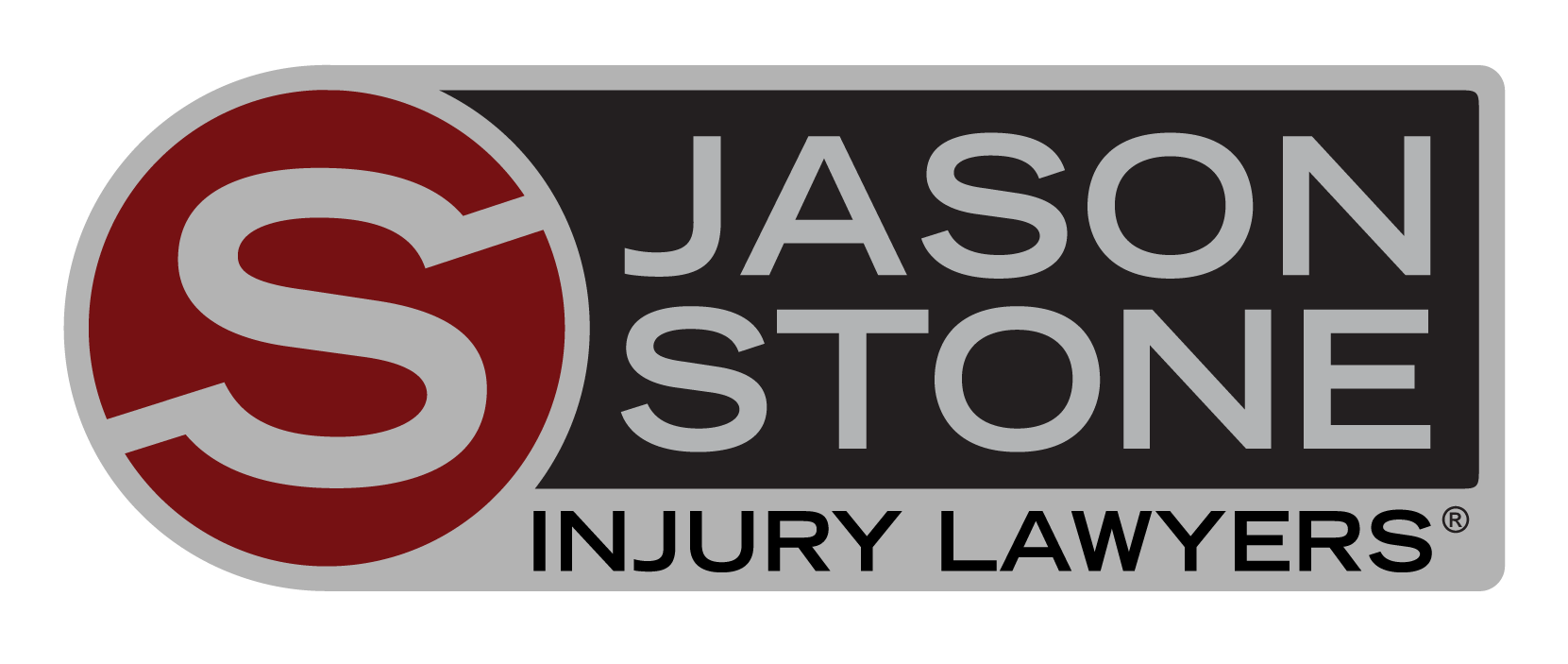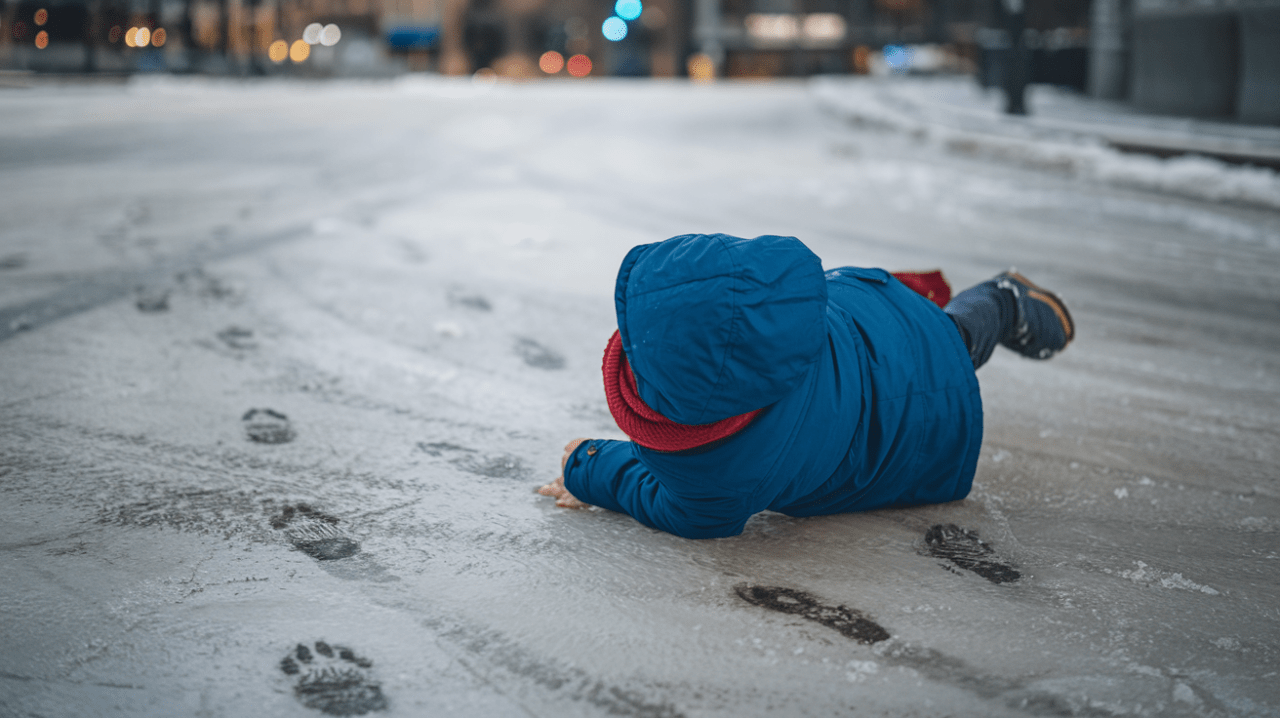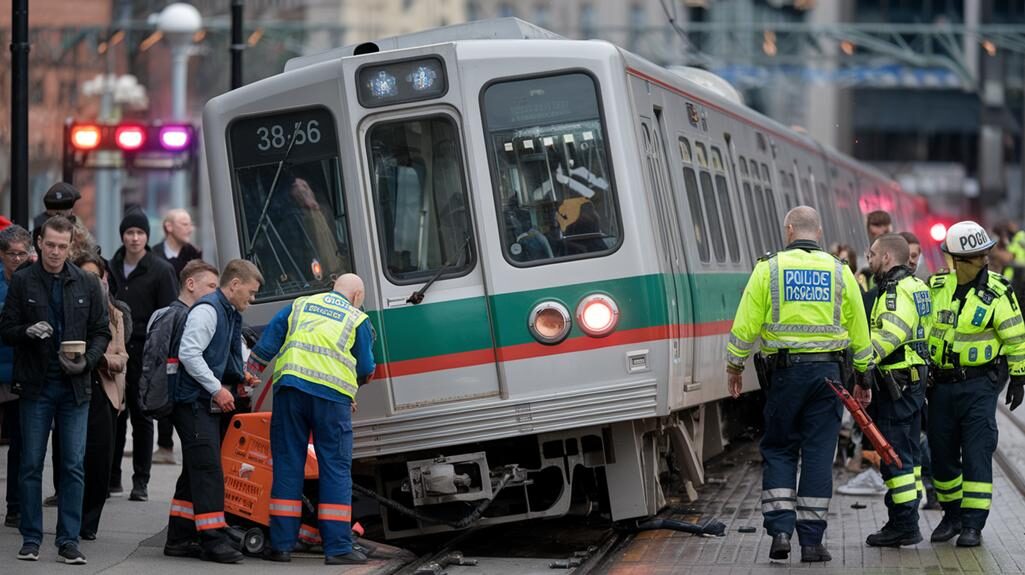LISTEN TO OUR BOSTON SLIP AND FALL PODCAST
Boston’s icy winter months bring a surge in slip-and-fall accidents, putting residents and visitors in danger. Icy patches, cracked sidewalks, and uneven walkways create common hazards that can result in significant medical costs and emotional stress. Maintaining safe pathways is essential, and property owners are responsible for regularly clearing snow and ice. By staying aware of your surroundings and understanding local safety regulations, you can help protect yourself from potential accidents. For legal guidance on what to do if you’re injured in these conditions, consult a Boston Slip and Fall Lawyer. There’s much more to know about staying safe this winter.
Highlights
- Boston experiences a rise in slip-and-fall accidents during winter due to icy conditions and poor maintenance of walkways.
- Property owners must prioritize regular snow and ice removal to ensure pedestrian safety and reduce liability risks.
- Community awareness and vigilance are crucial in identifying hazards like uneven pavements and icy surfaces.
- Victims of slip and fall incidents should document the scene and seek medical attention to support potential claims.
- Technological advancements and community engagement can enhance safety measures, reducing the incidence of slip and fall accidents.
Boston Slip and Fall Accident Trends: A Rising Concern
As Boston’s weather shifts from sunny days to the icy grip of winter, the risk of slip-and-fall accidents rises considerably. You may notice that sidewalks, Boston parking lots, and indoor spaces become treacherous. With aging infrastructure and seasonal challenges, hazards like icy patches and uneven walkways are more common.
In your effort to serve others, consider how you can help your community stay safe. Encourage local businesses and property owners to maintain their pathways and guarantee proper snow and ice removal. Share tips on how to navigate these dangers, like wearing appropriate footwear and staying vigilant.
Analyzing Boston’s Slip and Fall Injury Statistics
The increasing frequency of slip and fall accidents in Boston highlights the urgent need to examine the underlying statistics. Understanding these numbers can help you advocate for safer environments in your community.
| Statistic | Data |
|---|---|
| Older Adults at Risk | 1 in 4 adults aged 65+ experience falls annually |
| Fatal Workplace Injuries | 14% of fatal workplace injuries in 2020 were due to falls |
| Environmental Hazards | Cracked sidewalks and icy walkways are common culprits |
| Annual National Costs | Falls cost the U.S. over $50 billion in medical expenses |
1. National and Statewide Fall Rates
- Older Adults: Nationally, 27.6% of adults aged ≥65 years (1 in 4) report at least one fall annually, with higher rates in states like Alaska (38%) and lower rates in Illinois (19.9%) 9. Given its aging population and urban infrastructure, Massachusetts likely falls within this range.
- Emergency Visits: In 2023, falls accounted for 8 million emergency room visits in the U.S., with slips and falls responsible for 12% of these cases (~960,000 trips).
2. Boston-Specific Estimates
Using demographic and national data:
- Boston’s Population: As of 2023, Boston’s population is ~650,000, with ~15% aged 65+ (~97,500 people) [U.S. Census].
- Seniors: Applying the national fall rate (27.6%), roughly 26,910 older adults in Boston experience falls annually.
- All Ages: Including younger adults and children, total falls likely exceed 30,000–40,000 incidents yearly (extrapolated from national ER visit rates).
With Boston’s unique challenges, including historic infrastructure and harsh winters, staying informed is essential. Raising awareness of these statistics can help foster a safety culture, encouraging property owners and the community to take action against preventable accidents.
The Economic Toll of Slip and Fall Accidents in Boston
Slip and fall accidents in Boston can impose a staggering economic toll on individuals and the community. When you or someone you know experiences a slip and fall, it can lead to significant medical expenses, lost wages, and emotional distress. These incidents burden those injured, local businesses, and healthcare systems. As injuries rise, so do medical costs, which can strain your finances and community resources.
Additionally, businesses face potential liability claims, leading to increased insurance premiums and even closure in severe cases. This ripple effect impacts local economies, resulting in lost jobs and decreased consumer spending.
To combat this, fostering a culture of safety—encouraging property owners to maintain their spaces—can help alleviate these economic pressures. By supporting community initiatives to improve safety standards, you contribute to a healthier, more resilient Boston for everyone.
How Boston’s Urban Environment Contributes to Slip and Fall Risks
While traversing Boston’s bustling streets, you might not realize how the city’s unique urban landscape increases slip and fall risks. The combination of historical architecture, crowded sidewalks, and uneven pavement creates hazards that can catch anyone off guard. Understanding these factors can help you stay vigilant and protect yourself and others.
| Contributing Factors | Risks Involved | Safety Tips |
|---|---|---|
| Aging Infrastructure | Cracked sidewalks | Watch your step |
| High Pedestrian Traffic | Crowded pathways | Maintain personal space |
| Weather Variability | Sudden slippery surfaces | Wear appropriate footwear |
| Poor Lighting | Decreased visibility | Use reflective gear |
| Limited Maintenance | Accumulated debris | Report hazards promptly |
Seasonal Challenges: Winter Slip and Fall Accidents in Boston
In Boston, winter brings icy sidewalks that can turn a simple walk into a risky endeavor. You need to be aware of your surroundings and understand the responsibilities of property owners when it comes to snow removal. Neglecting these duties can lead to dangerous conditions, increasing your chances of a slip-and-fall accident.
Icy Sidewalk Hazards
As winter blankets Boston in snow and ice, the risk of icy sidewalk hazards becomes a pressing concern for pedestrians. You might not realize it, but even a thin layer of ice can make sidewalks treacherous. When you venture outside, watch your step and stay alert. Opt for sturdy footwear with good traction to help prevent slips. If you see an icy patch, consider reporting it to local authorities or property owners. Encouraging your neighbors to do the same can foster a community spirit of safety. Together, we can minimize accidents and protect one another from the dangers of winter weather. Stay cautious, and let’s keep our sidewalks safer for everyone this season.
Snow Removal Responsibilities
When winter weather hits Boston, property owners and tenants must guarantee that their sidewalks and entrances are clear of snow and ice. By promptly removing snow, you’re complying with local laws and protecting your neighbors and visitors. A well-maintained path can prevent slip-and-fall accidents that may lead to serious injuries.
Make a plan to shovel regularly, especially right after a snowfall. Use salt or sand to enhance traction on ice. If you’re a tenant, discuss snow removal responsibilities with your landlord to guarantee safety. Remember, your efforts contribute to a safer community and demonstrate care for those around you. Let’s work together to keep Boston’s walkways safe and accessible this winter!
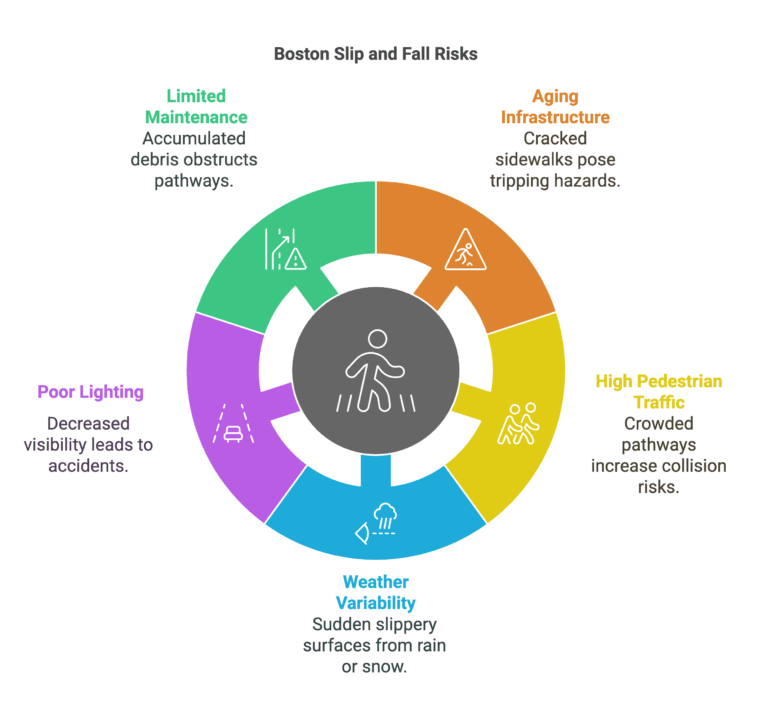
Boston Infrastructure and Its Role in Increasing Slip and Fall Incidents
While Boston’s rich history adds charm to the city, its aging infrastructure often poses significant pedestrian risks. Combining old buildings, uneven sidewalks, and inadequate maintenance creates an environment ripe for slip and fall incidents.
You can take note of a few key issues that contribute to these accidents:
- Uneven Walkways: Cracks and shifts in the pavement can easily trip you up.
- Poorly Lit Areas: Insufficient lighting makes hazards harder to see, especially at night.
- Inaccessible Maintenance: Inconsistent snow removal and debris management leave slippery surfaces untreated.
Understanding these factors can help you stay vigilant. By recognizing the risks posed by Boston’s infrastructure, you can advocate for better maintenance and safety measures in your community. Encouraging local authorities and businesses to prioritize pedestrian safety benefits everyone, fostering a safer environment for all who walk the historic streets of Boston.
Effective Safety Measures for Preventing Slip and Fall Accidents in Boston
To effectively prevent slip and fall accidents in Boston, it’s crucial to implement a combination of proactive safety measures. Start by ensuring walkways are clear of ice and snow. Regularly inspect and maintain sidewalks, driveways, and entryways to fix any uneven surfaces or cracks. Encourage residents to report hazardous conditions promptly, fostering a community of vigilance.
Use proper signage to alert pedestrians of potential dangers, especially in winter. Installing non-slip mats in high-traffic areas can significantly reduce risks, too. Additionally, consider offering safety workshops that educate community members on best practices for maneuvering through slippery conditions.
Promoting collaboration between property owners, local businesses, and city officials is essential to create thorough safety protocols. By prioritizing these measures, you protect yourself and others and contribute to a safer Boston for everyone. Together, we can reduce the risk of slip and fall accidents in our beloved city.
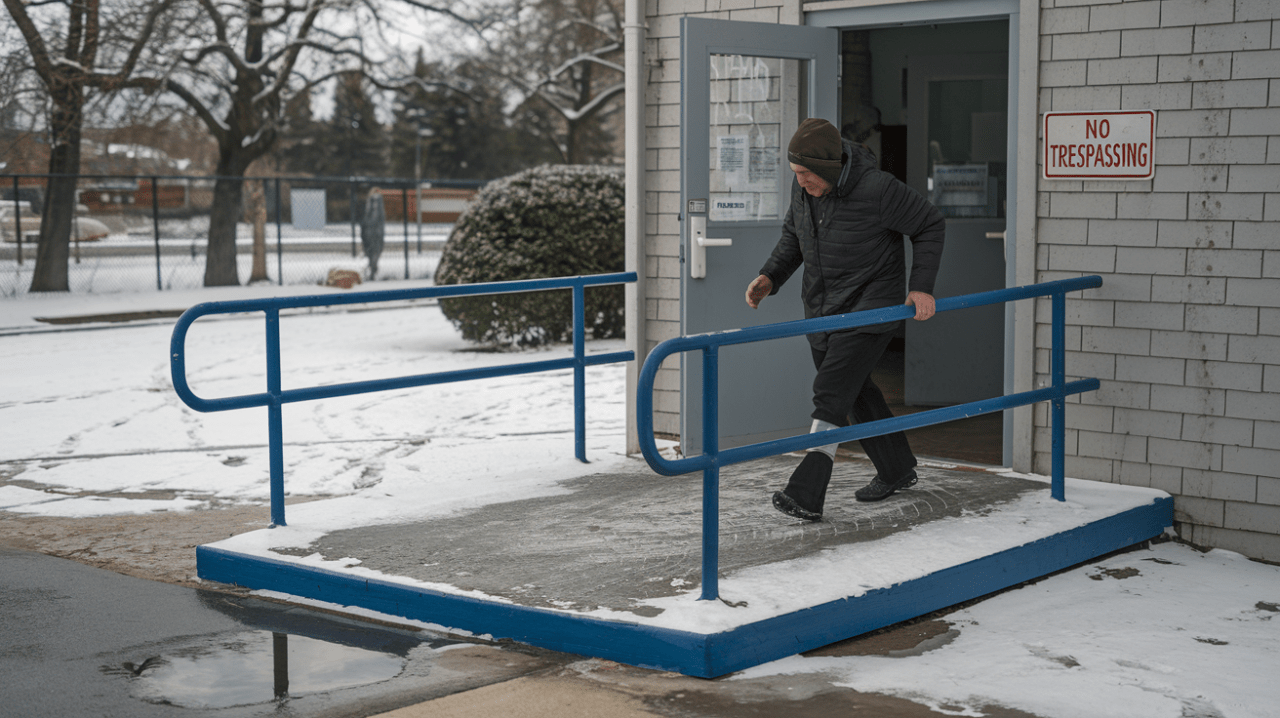
Boston Business Liability: Managing Slip and Fall Risks on Premises
Understanding your liability as a business owner in Boston is essential, especially when managing slip and fall risks on your premises. Taking proactive steps can protect both your customers and your business.
Here are three key actions you should consider:
- Regular Inspections: Perform routine property checks to identify and address potential hazards, such as uneven surfaces or icy walkways.
- Prompt Maintenance: Guarantee that any issues are fixed immediately. Whether clearing snow or repairing broken tiles, timely maintenance shows your commitment to safety.
- Clear Signage: Use clear signs to warn customers of potential hazards. This not only informs them but also demonstrates your dedication to their well-being.
The Impact of Aging Architecture on Boston’s Slip and Fall Rates
Aging architecture significantly contributes to slip and fall accidents in Boston, creating unique challenges for residents and visitors. As you navigate the city, you’ll notice uneven sidewalks, crumbling steps, and worn-out railings that can easily lead to accidents. While charming, many historic buildings often lack modern safety features that prevent slips and trips.
You might find that poorly maintained public spaces exacerbate these hazards, especially during harsh winter months when ice and snow make surfaces even more treacherous. Everyone—property owners, city officials, and the community—is responsible for advocating for better maintenance and safety upgrades.
Future Trends in Slip and Fall Accidents: What to Expect in Boston
While the landscape of slip-and-fall accidents in Boston continues to evolve, several key trends will likely shape the future.
You’ll want to stay informed about these developments to guarantee safety for yourself and others:
- Increased Awareness: As more people recognize the dangers of slip and fall accidents, community programs will focus on educating the public about hazard identification and prevention.
- Technological Advancements: Expect innovative solutions, such as anti-slip coatings and smart walkway sensors, designed to reduce hazards and alert property owners to maintenance needs.
- Community Engagement: Local organizations may collaborate with businesses to promote better maintenance practices, guaranteeing public spaces remain safe and accessible.
Boston Safety Regulations and the Rise of Slip and Fall Lawsuits
Understanding Boston’s safety regulations is essential since these laws directly impact the rise of slip and fall lawsuits. The city mandates property owners to maintain safe walkways, clear ice, and snow promptly, and address any hazards. When these regulations aren’t followed, it can lead to serious injuries and, consequently, more lawsuits.
You play a crucial role in promoting safety within your community. By encouraging property owners to uphold these standards, you help prevent accidents and protect others. Be proactive—report unsafe conditions you encounter, whether in public spaces or workplaces.
Moreover, stay informed about your rights. If you or someone you care for experiences a slip and fall, understanding the legal landscape can empower you to seek justice. Together, we can create a safer Boston, minimizing risks and fostering a culture of care and responsibility for everyone’s well-being.
Insights from Jason Stone Injury Lawyers on Boston Slip and Fall Cases
As slip and fall cases continue to rise in Boston, insights from Jason Stone Injury Lawyers shed light on the complexities surrounding these incidents. They emphasize the importance of understanding the factors that contribute to these accidents and the responsibilities of property owners.
Here are three key points to keep in mind:
- Aging Infrastructure: Many Boston properties suffer from worn-down walkways and untreated icy surfaces, increasing fall risks.
- Legal Responsibilities: Property owners must maintain safe conditions and address hazards promptly to avoid liability.
- Community Impact: Slip and fall accidents don’t just affect individuals; they strain local businesses and health services.
Boston Legal Strategies: Jason Stone Injury Lawyers on Slip and Fall Claims
With the rise in slip-and-fall incidents, knowing how to navigate the legal landscape surrounding these claims is vital for anyone affected. Jason Stone Injury Lawyers are dedicated to helping victims understand their rights and pursue justice. They emphasize documenting the scene immediately after an accident—take photos, gather witness information, and report the incident to property owners.
Their expertise in Massachusetts law guarantees you’re equipped to handle complex claims, especially with Boston’s unique challenges, like icy sidewalks or uneven pavement. They also stress the importance of seeking medical attention right away, as this prioritizes your health and strengthens your case.
As winter takes hold in Boston, staying aware of the slip and fall risks is essential. You can’t afford to be complacent with icy sidewalks and challenging conditions. Prioritize your safety by wearing appropriate footwear, maneuvering carefully, and reporting hazardous areas. Remember, being informed and cautious can prevent accidents that lead to injury and financial strain. Don’t let a winter slip disrupt your life—stay vigilant and enjoy the season safely!
Not Trusting What You’re Being Told?
Better Phone Stone
800-577-5188
 START MY NO OBLIGATION CONSULTATION
START MY NO OBLIGATION CONSULTATION